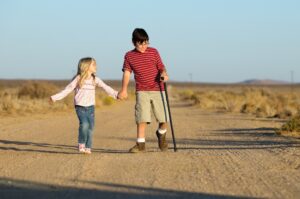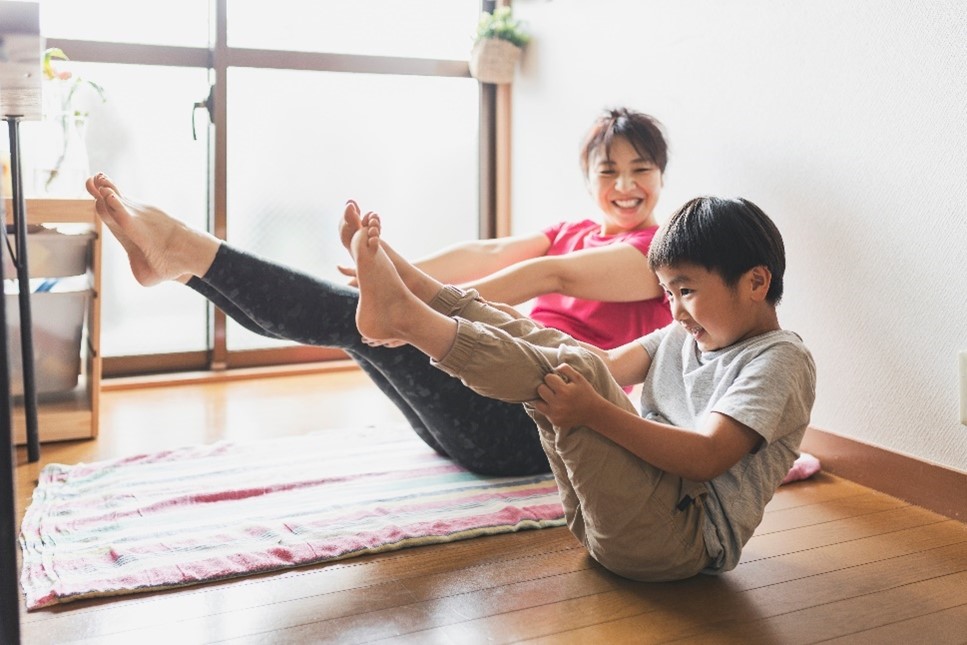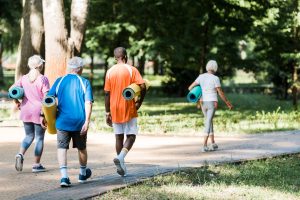On October 4, we launched the 2022 ParticipACTION Report Card on Physical Activity for Children and Youth. Since then, we spoke with Dr. Leigh Vanderloo, Scientific Director at ParticipACTION, to hear her thoughts and insights on the Report Card grades and evidence.

Why is the 2022 Children and Youth Report Card so important?
The 2022 Children and Youth Report Card summarizes the best available research on physical activity like national-level surveys, key published studies and more. We hope it will serve as a call to action to help kids living in Canada become more active.
Physical inactivity is a generational problem driven by our modern lifestyles. Screen time increases, growing urban development in communities and the rise in automation of previously manual tasks all play a role in this widespread public health issue that must be recognized as a national and global priority. The pandemic has only added to the challenge, as screens became necessary for education and recreation, and public health restrictions fueled an indoor, sedentary lifestyle.

What’s new in this year’s Children and Youth Report Card?
To stress the importance of physical activity for equity-deserving groups, the 2022 Report Card features key findings specific to children and youth with disabilities, girls as well as Indigenous, 2SLGBTQQIA+, newcomer and racialized children and youth. Many families, communities and organizations worked hard to provide active opportunities for kids, but unfortunately physical activity opportunities were often not experienced equitably. For example, car-free street spaces were generally allocated in areas with fewer visible minority populations and households with children.
We hope this report will raise awareness of the importance of measuring, promoting and understanding physical activity for equity-deserving children and youth.

What key stats and grades should people be aware of?
- At the height of the pandemic, only 28% of kids were meeting the moderate-to-vigorous physical activity (MVPA) recommendation of 60 minutes per day.
- Kids received a “D” for Overall Physical Activity, a drop from a “D+” in the 2020 Report Card. This represents an 11% decrease in MVPA.
- Most alarmingly, only 18% of kids met the screen time recommendations within the Canadian 24-Hour Movement Guidelines of no more than two hours of daily recreational screen use, leading to an “F” for Sedentary Behaviours, a decrease from a “D+” in 2020.
How has the pandemic affected the grades in this year’s Report Card?
At the start of COVID-19, there was a sudden and drastic shift in how kids could access physical activity opportunities. Playing with friends, in-person physical education classes, sport competitions and community centre programming stopped. As well, the pivot to virtual learning and calls to stay at home raised already problematic screen use, creating even greater concerns for the many ways screen time depletes kids’ well-being.

As the pandemic continued, most families understood the urgent need to protect public health but also realized that many kids were suddenly deprived of essential opportunities to stay active, develop skills and connect with peers through sport and physical activity. This realization led to some positive outcomes for kids, as many families, communities and organizations worked hard to provide kids with opportunities to be active. For example, some communities found ways to use car-free urban spaces, paths and open-air markets so families could get outside and move.
At the height of the pandemic, time spent outdoors and engaged in active play increased compared to the start of it but was still below pre-pandemic levels. For example, since 2020, 40% of Canadians increased trail use, and many retailers couldn’t keep up with the increased demand for outdoor recreational gear throughout the pandemic.

There was also a recent global physical activity ranking. How did Canada do?
Yes, this ranking is called the Global Matrix 4.0, which assesses global levels and trends in child and adolescent physical activity. The report involves 682 experts who produced 57 country report cards, grading 10 common indicators. The resulting “Global Matrix” of grades is an examination of global patterns and highlights how our changing world is affecting children’s physical activity levels. Canada’s submissions to the Global Matrix 4.0 are the grades from the ParticipACTION Report Card on Physical Activity for Children and Youth.
Of the 57 participating countries, Canada ranks 28th for Overall Physical Activity (Grade: D), 52nd for Sedentary Behaviour (Grade: F) and 25th for the overall combined ranking across all indicators (Grade: C-). However, Canada does better on many social, cultural and political indicators: we are 9th in the world for Community and Environment (Grade: B), 16th for Family and Peers (Grade: C) and 20th for Government (Grade: B-).
Which grades should people focus on improving the most and why?
Keep up with active transportation and active play (specifically outdoor play) because both offer major physical, mental, social and environmental benefits.

What key actions can people do to support kids’ physical activity and help improve the grades?
We all have a role in addressing physical inactivity in our kids. Countries like Slovenia and Denmark, which have consistently done well globally when it comes to physical activity, have dealt with this issue by tackling the widespread cultural and social norms behind inactive kids. To make being active a way of life for every kid in Canada, we need solutions that involve parents, educators, communities and all levels of government working together and investing in long-term, sustained strategies with a clear vision for the future.








